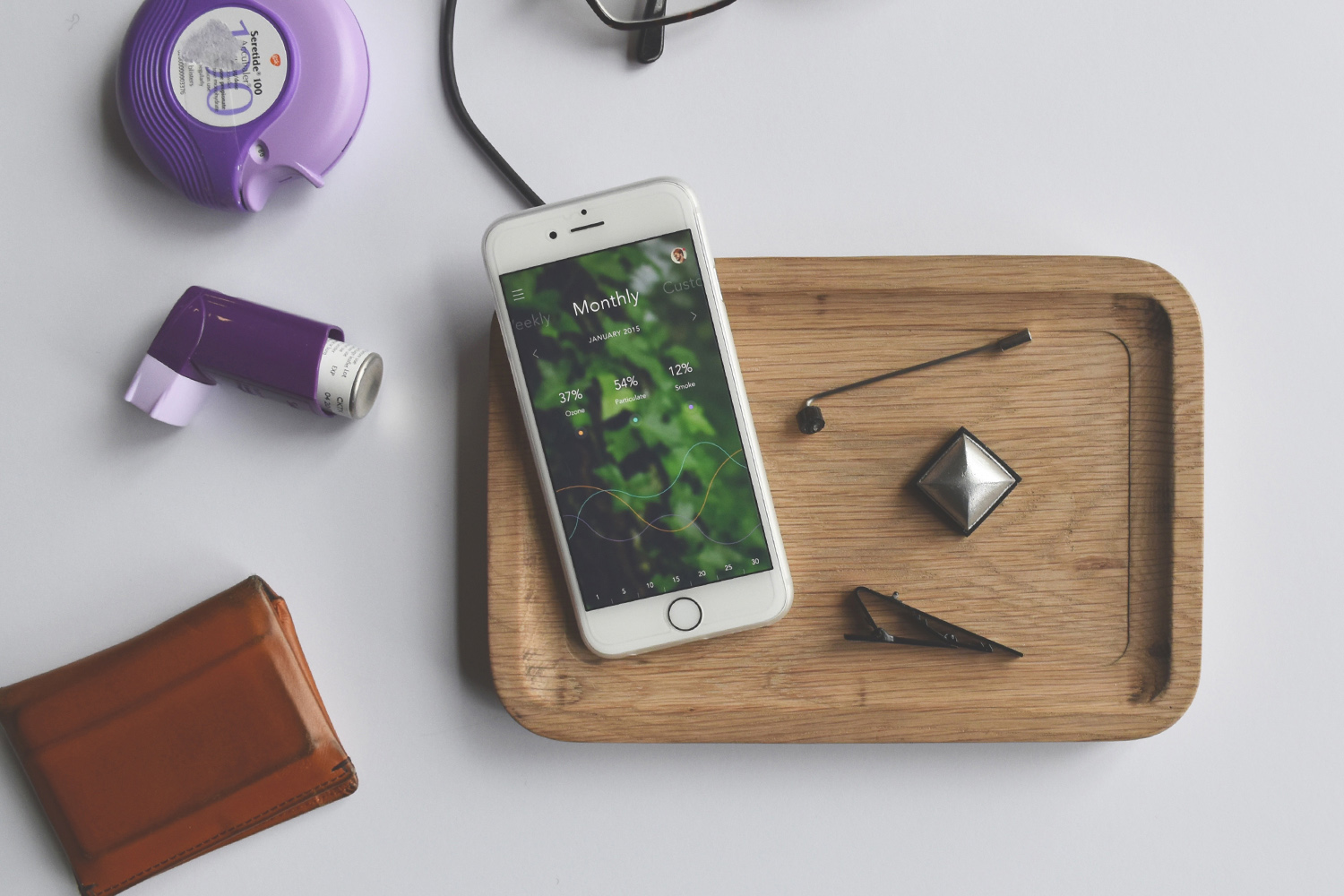As our students prepare for the public opening of Degree Show Two: Design tomorrow, we take a closer look at their final projects and the inspirations behind them.
5.4 million people in the UK suffer from asthma. It can be a chronic condition, however, 75% of hospital admissions caused by the disease are preventable. The majority of these patients are admitted because they are unable to identify risk factors in their own surrounding environments. As a possible solution, BA Product Design student Neo Yau has created Airy – a smart sensor which provides asthma patients with more control over their conditions. Airy can identify and alert the user to risks that cannot be detected unaided, enabling them to become less reliant on inhalers. With a focus on consumer electronics, Yau has also produced One TV, an easily upgradable and repairable modular TV – made in response to the huge numbers of TVs thrown away in the UK each year. Here, Yau talks us through five inspirational examples of product design which have inspired his own working methods.

Original Apple iPhone, 2007. Photo: Apple
1. The Original Apple iPhone
I finished my first degree in Economics at Brunel University, but when I began working as an accounts payable assistant I realised my true passion was design. I started attending evening courses in fashion design; the feedback I received from my tutor was that I was simply putting a product on a dress rather than producing overall fashion designs. This comment initially surprised me but it also got me thinking about whether the discipline of fashion design was right for me. I have always been very passionate about innovative products and technology, and during that time Apple’s iPhone was getting a lot of attention. This helped me realise that my passion and future career path was in product design. I can say the iPhone is definitely one of the main causes for my move into design and made me who I am today.

Dieter Rams, Ten Principles for Good Design. Photo: Vitsoe
2. Ten Principles for Good Design
When I first started BA Product Design at Central Saint Martins, I didn’t have much design theory knowledge. While I was researching in the library, I came across the book Ten principles for good design written by the legendary industrial designer Dieter Rams. I was deeply impressed by the products that Rams has designed over the years but also his philosophy of “Less but Better”. These ten principles of good design have laid down the foundations and framework for the basis of all my work.

Industrial Facility (Sam Hecht & Kim Colin) for Muji, Second Phone, 2002–2006. Photo: Industrial Facility
3. Industrial Facility (Sam Hecht & Kim Colin) for Muji
Muji is one of my favourite brands as their design motto sits in line with Rams’ “Less but Better” motto. Their main selling point is functional products with simple, no-frills design. Industrial Facility (Sam Hecht and Kim Colin) have applied this ideology onto a range of products across the brand, offering customers affordable items that fulfil their function with no unnecessary, extra elements. As world resources are extracted for production every day, functional products that feature only what is needed are undoubtedly a more sustainable way of working.

Elevenplus, O-Fan. Photo: Elevenplus
4. O-Fan
Another brand that I have fallen in love with is Elevenplus – a design manufacturer for desktop accessories in Korea. Their products are not just functional but also aim to “inspire your emotions and bring happiness to your life.” Although using a similar minimal design language as Muji, Elevenplus’ products also offer an emotional experience. This is something I personally find effective in attracting customers to return and consider buying products again. Whenever I work on a new project, this principle is embedded into my own process – to create something useful while connecting the user on a more personal level, offering them a satisfying user experience.

Joseph Joseph, Index™ Chopping Board, 2008. Photo: Joseph Joseph
5. Joseph Joseph
Joseph Joseph’s products focus on user experience by identifying daily issues in the household, leading to innovative yet simple solutions. Their products are also satisfying to use, setting them apart from their existing competitors. During my time on the BA Product Design course at Central Saint Martins, I have been taught about the importance of human-centred design – products which are designed with the end-user as the focal point. Working as an intern at Morph studio designing products for Joseph Joseph, certainly made me realise the importance of putting the user’s experience first when designing any consumer products.
More:
- Read about BA Product Design
- Visit Degree Show Two: Design from 20–24 June

